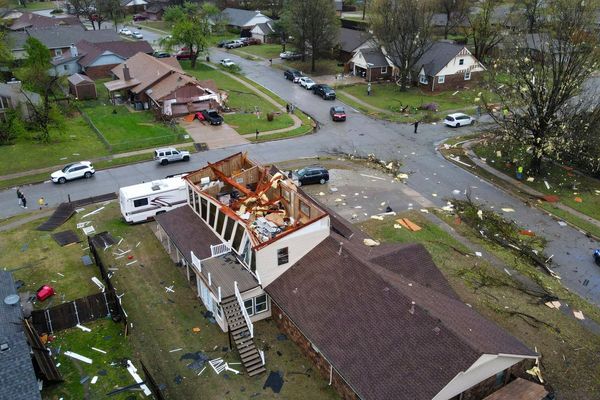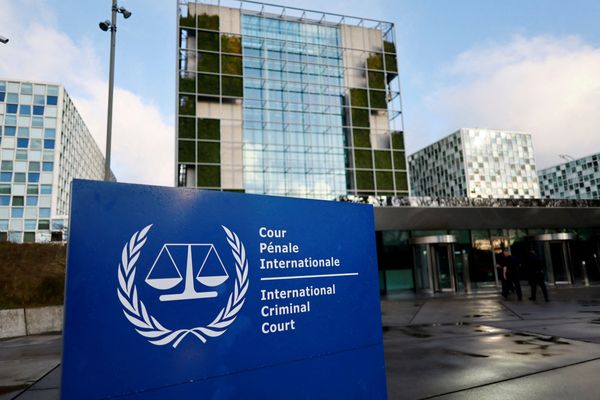With war raging in Ukraine, the sabotage of undersea infrastructure in the Baltic Sea, and increasingly aggressive nuclear rhetoric from Russia, many countries in the region are giving their citizens advice on how to prepare for a crisis, emergency or war.
The Baltic states – Estonia, Latvia and Lithuania, which share borders with Russia, – have regularly updated public information over the past decade. This partly stems from historical experiences of Soviet occupation, and fears of something similar happening again.
On the other side of the Baltic Sea, emergency preparedness advice has also been updated this year in Denmark and Norway.
The Danish information is not directly linked to war, but mentions other possible crises such as extreme weather and cyber attacks. The advice focuses on how citizens could be prepared to cope for three days, without power, including having your own water supply of nine litres in storage and having a stock of canned food. The Norwegian information also talks about how to survive for one week without power. It suggests having food, matches, candles and iodine tables in case of nuclear attack.
This month, Finland and Sweden, which both recently joined Nato, launched large-scale crisis preparedness campaigns. Both countries are urging citizens and residents to be more prepared to cope if something unexpected happens. But it is striking how different they are – in tone and narrative, as well as in dissemination method.
The Swedish leaflet, In Case of Crisis or War, is available digitally, but was also posted to 5.2 million Swedish households this month. The yellow cover shows two armed soldiers, a warship and a fighter plane.
Inside, readers can learn about everything from warning systems, shelters and emergency evacuation to digital security and home preparedness. It starts: “We live in uncertain times. Armed conflicts are currently being waged in our corner of the world.” The leaflet also gives practical advice about storing food without power, and having access to first aid and water. If the crisis means deliveries cannot be made to shops then shelves may be empty in a few days, it says. And adds that cash will be needed, as digital forms of money may not work. “Start building up your emergency storage by simply buying one or two additional items when doing your regular shopping.”
The leaflet also includes a description of the Swedish concept of “psychological defence”, which has had its own governmental agency since 2022. Psychological defence, the agency’s homepage states, is “society’s common capabilities for detecting and resisting malign information influence directed at Sweden by antagonistic foreign powers”.
The Finnish information guide, Preparing for Incidents or Crises, takes a different approach. The cover image is more metaphorical. “Prepared people cope better,” it states, while depicting two women standing in the rain, only one of them holding an umbrella. However, the online guide has a range of topics to click on, including military conflict, terrorism, water contamination and power cuts.
So why is Sweden preparing for war and total blackout by resorting to analogue paper leaflets, while the Finns are preparing for a different emergency, one in which you can still access the internet?
Defence history
The differences in approach can be explained, at least partly, by the diverging histories of these two neighbouring countries, and their respective relationships with Russia. Sweden remained neutral in the second world war, and was never under occupation like Denmark and Norway. But countless parallels have been drawn between today’s tenacious Ukrainian defenders and the resilient Finns’ resistance to the brutal Soviet invasion during the winter war of 1939–1940. After the Treaty of Moscow in 1940 Finland ceded 11% of its territory to the Soviet Union. Alexander Stubb, now president of Finland, said joining Nato was a “done deal” after the full-scale invasion of Ukraine in 2022. Finns, remembering their history, thought Russia could follow this by advancing in their direction.
Sweden has a long history of nationwide information campaigns and ambitious civil defence planning, compared to most countries. As early as 1943, the government issued the first of many leaflets which was to be distributed to every Swedish household under the title If the war comes: Instructions for Swedish citizens. The leaflet contained information about everything from sirens, shelters, and blackouts, to spies and rumours, and how to uphold the “will to defend”. Several updated editions were published during the cold war, focusing on what to do in the event of a nuclear attack – in 1952, 1961 and in the 1980s. For decades, the main information from the leaflet was also included in all Swedish telephone books.
Between 1996 and 2004, Sweden dismantled its civil defence along with much of its military defences, only to realise in the 2010s that this might not have been such a good idea after all. In 2017 it reintroduced conscription. In 2018, after decades of relative silence on the issue of civil defence and preparedness, the Swedish authorities revisited their cold war approach. A new version of the leaflet – this time with the word “crisis” added – was printed and distributed to every household. Six years later, a new one has arrived.
Meanwhile, the Finns maintained their calm defence track in the 1990s and early 2000s, unconvinced by the arrival of peace and prosperity, and the dismantling of the Soviet Union. But today they are also much less willing to be explicit about the prospect of war than Swedish politicians. Unlike the Swedes, Finns do not need to be reminded of that war can become a reality or where the threat comes from. Finland’s long border with the Soviet Union has long forced it to navigate Russian influence in a different way than its Nordic neighbours, a diplomatic balancing act of a non-aligned country facing an imperialist neighbour.
Against the background of different 20th-century historical experiences, but also different traditions of how to address their populations, the Nordic and Baltic governments today aim to strengthen the everyday preparedness of their citizens in their own ways. But they share a basic perception of where the threat comes from: Russia.
This article was updated on December 1 to add a link to updated government advice from the Norwegian government, which suggests planning to survive for one week without power, rather than three days.
Marie Cronqvist receives funding from the Swedish Research Council (Vetenskapsrådet).
This article was originally published on The Conversation. Read the original article.







